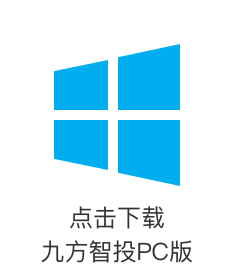Core views:
An advanced semiconductor material platform in China, Nata focuses on three key semiconductor materials including precursors, electronic special gases and photoresists. The Company looks well positioned for good growth. For 2021E-23E, we estimate the Company’s attributable net profit (ANP) to be Rmb135mn/196mn/248mn, implying EPS of Rmb0.32/0.47/0.59. Based on its historical and comparable PE multiples, and given its growth potential, we believe a 110x 2022E PE is a fair valuation. We initiate coverage with a target price of Rmb52 and a “BUY” rating.
Abstract:
An advanced semiconductor material platform company. Nata’s business includes three major products: precursor, special gas and photoresist. In the field of precursors, leveraging the breakthroughs from the “Plan 863” (a national high-tech R&D plan proposed on Mar 3, 1986) and years of efforts, the Company achieved leapfrog development in technology, product categories and market expansion. Nata occupied the largest market share of around 30% for metal organic (MO) source in the domestic market in 2021. In the field of electronic special gas, the Company undertook the “High-purity Special Electronic Gas R&D and Industrialization” project under the national science and technology “02 Special Project”-a project focused on the extensive circuit integration (IC) and peripheral equipment manufacturing-in 2013, and started the R&D of special gases such as arsine and phosphine the same year. It acquired Feiyuan Gas in 2019 to foray into the fluorine-containing electronic gas market. In the field of photoresist, Nata undertook the “193nm Photoresist and Supporting Materials R&D” project under the “02 Special Project” in 2017. In 2020, the Company came up with a breakthrough of ArF photoresist product, the first domestic ArF photoresist that has passed product verification in China.
MO source leader with high customer coverage. MO source is the core raw material for manufacturing liquid crystal displays (LEDs), new-generation solar cells, phase-change memories, semiconductor lasers, radio frequency integrated circuit chips, etc., of which more than 90% are used to produce LED epitaxial wafers. Though the growth of the LED lighting market slowed compared to previous years, the rapid capacity ramp-up of mini-LEDs and thin film solar cells, as well as the fast development of phase-change memories and chips still boost the demand for MO sources. We expect the global MO source market size to reach US$180mn by 2025, growing at a CAGR of 8.3%. Nata's unique MO source synthesis method boasts more simplified manufacturing process, fewer side products and less costs by using non-corrosive raw materials compared with the traditional halide-directed synthesis method. The Company’s products have been exported into many mainstream markets including Asia-Pacific, Europe and the United States with a high customer coverage, which further secured its leading position.
The pioneer of domestic photoresist. Photoresist has high technical barriers and the demand for import substitution is quite strong. The photoresist market is currently mainly dominated by Japanese, US and South Korean companies, with TOK, JSR, Sumitomo Chemical, Fujifilm, Dow Chemical and Dongjin Semichem accounting for nearly 90% of the market share, let alone the segment market of high-end ArF photoresist, where overseas monopoly prevails. Through the wire process technology (supporting 45-90nm node) and the hole process technology (supporting 65-90nm node), the Company managed to pull off a self-developed ArF photoresist that passed the first-ever customer certification in China in 2020. We expect Nata’s annual production scale of 193nm photoresist products to reach 25t (5t of ArF dry and 20t of immersion) going forward in an anticipation to gradually realize import substitution.
Active deployment in electronic special gas. Electronic special gas is an indispensable key material for manufacturing integrated circuits, flat panel displays, LEDs, solar cells and other pan-semiconductor products. We estimate that in 2023, the total size of the global electronic special gas market is likely to reach Rmb93.4bn with the IC market of Rmb40.1bn, and the total domestic market size to amount to Rmb23.8bn with the IC market of Rmb10bn. Nata’s self-developed phosphine and arsine, which boast a purity of 6N and above and have entered the supply lists of tech big names such as Intel, OSRAM and Philips, are likely to break the overseas monopoly. Meanwhile, Nata has forayed into the fluorine-containing electronic gas market through the acquisition of Feiyuan Gas, and become the supplier for a number of international leading companies such as TSMC, SMIC, BOE and Foxconn. With the continuous capacity ramp-up, Nata is poised for further growth in the electronic special gas market.
Potential risks: Less-than-expected technological breakthroughs; disappointing progress of downstream customer introduction; fluctuation in product prices; production capacity ramp-up missing expectations.
Investment recommendation: Nata is a leading platform-based domestic manufacturer of three key semiconductor materials of precursors, electronic special gas, and photoresists and is on track for sound development. We forecast 2021E-23E ANP of Rmb135mn/196mn/248mn, equivalent to EPS of Rmb0.32/0.47/0.59. Considering the valuation of its comparable peers and its historical valuation and growth prospects, we assign 110x 2022E PE to derive a target price of Rmb52 and initiate coverage with a "BUY" rating.












